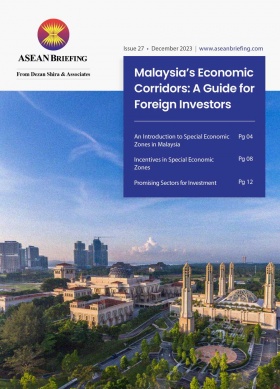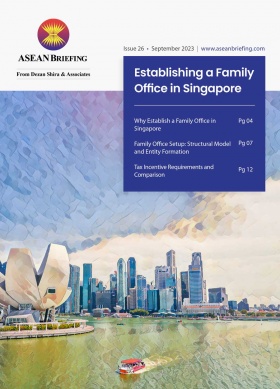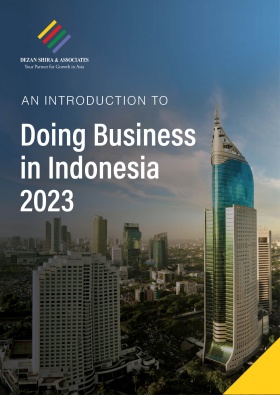Investing in Greater Kuala Lumpur
Malaysia’s economy expanded by 3.3 per cent in the third quarter of 2023, supported by strong domestic demand and a rebound in the tourism sector, with an impressive 8.7 per cent growth in 2022 — the fastest in Southeast Asia — driven by resilient demand in electrical and electronics exports, a recovery in tourism activities, and a boost in energy exports due to higher global oil and gas prices. Despite the challenging global environment, the Malaysian economy is projected to remain resilient, with an expected growth of around 4% in 2023 and 4%–5% in 2024, driven by firm domestic demand despite external headwinds.
Malaysia targets RM300 billion (US$64 billion) in annual foreign investments by 2025, focusing on high-value and high-impact activities.
The country’s capital, Greater Kuala Lumpur (Greater KL), is the heart of a regional hub, offering a vibrant business center, competitive costs, and robust infrastructure and technology ecosystem.
InvestKL, a promotion investment agency under the Ministry of Investment, Trade and Industry, secured RM2.48 billion (US$517 million) in the first half of 2023 for Greater KL, demonstrating Greater KL’s substantial investment opportunities.
Why invest in Greater KL
The base for entry to Southeast Asia
Greater KL provides a launchpad for businesses looking for a base to expand into the Southeast Asian markets, rivaling that of Singapore as the main hub for trade and business in the region.
Malaysia’s strategic location at the crossroads of the Straits of Malacca and the South China Sea positions it as a key maritime hub, facilitating seaborne trade between the Indian Ocean and East Asia. Kuala Lumpur International Airport (KLIA) is recognized by OAG as the most connected Asian hub, hosting an estimated 57 million passengers in 2022, further solidifying Malaysia and Greater KL’s significance in global air travel.Investment friendly policies
The Malaysian government has introduced various policies to ease doing business for global leading companies. This year, the government launched the fourth edition of the Industrial Master Plan, dubbed the New Industrial Master Plan 2030 (NIMP 2030), aimed at moving the country up the global industrial value chain. NIMP 2030 aims to create a robust ecosystem for high-value industries by emphasizing innovation, workforce upskilling, and sustainability. Anticipating a 6.5% GDP increase to RM587.5 billion by 2030, the masterplan targets a 2.3% growth in employment, benefiting 3.3 million individuals with higher median salaries, elevating the nation toward economic prosperity and improved livelihoods
The NIMP 2030 has identified four key objectives:
- Advanced economic complexity;
- Tech up for a digitally vibrant nation;
- Push for Net Zero; and
- Safeguard economic security and inclusivity.
These objectives will be supported by four enablers, which are:
- Enabler 1: Mobilize financing ecosystem;
- Enabler 2: Foster talent development and attraction;
- Enabler 3: Strengthen best-in-class investor journey for ease of doing business; and
- Enabler 4: Introduce a whole-of-nation governance framework.
In October 2022, the Malaysian government unveiled its New Investment Policy (NIP) designed to guide the implementation of reforms aimed at enhancing Malaysia’s investment ecosystem.
Top of Form
The launch of NIP is important to enhance the country’s competitiveness in attracting high-value investment for holistic economic growth. Aligned with National Investment Aspirations (NIA), the policies introduce key reforms to strengthen Malaysia’s foundation, fostering the growth of high-value ecosystems. Focusing on mutual benefits for investors and the nation, NIA strategically targets future policies and investments to maximize values for all. The policy concentrates on five key pillars:
- Increase economic complexity;
- Create high-value job opportunities;
- Extend domestic linkages;
- Develop new and existing clusters; and
- Improve inclusivity.
A highly skilled workforce
Malaysia, particularly Greater KL produced some of the region’s most educated and highly skilled workforce, playing a key role in driving innovation, nurturing economic growth, and attracting global investments. Its multilingual talents give MNCs a competitive advantage in navigating a diverse market.
This is evident with the 2022 Global Talent Competitiveness Index, Malaysia was ranked 45th out of 133 countries. This ranking demonstrates the dynamic talent landscape in Greater KL, showcasing the ability to attract and nurture a highly skilled, multilingual workforce, thus positioning the city as a hub for global business activities.
The Malaysian Education Blueprint of 2015-2025 further promotes the strategic partnership between universities and industries by allowing businesses to collaborate the curriculum design, particularly in the fields of science, technology, engineering, and mathematics (STEM). It highlights the government’s commitment to upskilling the workforce, ensuring they stay ahead of the curve in this space.
The government is also making a substantial investment in digital talent through initiatives such as The National Digital Skills Strategy. Launched in 2019, it aims to equip Malaysians with digital competencies. With the rising global demand for specialized digital skills such as cybersecurity, generative AI, and the Internet of Things (IoTs) to meet this demand, Malaysia aims to produce an estimated 20,000 cybersecurity experts by 2025.
With the digital economy expected to account for 25 per cent of the country’s GDP, ICT professionals will play a significant role in stimulating economic growth.
Greater KL’s livability
As the city rises as a prominent destination in Southeast Asia, Greater Kl features a mixture of modern skyscrapers with a unique blend of historical architecture. The city offers a diverse array of attractions, including over 300 activities such as parks, museums, art galleries, malls, and award-winning golf clubs.
Key growth opportunities
Digital economy
The digital economy remains a key growth economic area for Malaysia. It is expected to contribute to 25 per cent of GDP and will generate over 500,000 jobs by 2025.
The country has witnessed significant investments in data centers located on the fringes of Greater KL. Malaysia’s data center market is expected to reach US$1.57 billion by 2027. According to a report by KPMG, the city was ranked the ninth top city in the Asia Pacific and outside of Silicon Valley for its potential to be a leading tech innovation hub.
In a report compiled by Bains & Company, Temasek, and Google, Malaysia’s digital economy is expected to reach a gross merchandise value (GMV) of between US$40 and US$70 billion by 2030, from US$21 billion recorded in 2022. E-commerce will drive the bulk of this growth, reaching an estimated GMV of US$18 billion by 2025 from US$14 billion in 2022. This will be followed by online travel (GMV of US$8 billion in 2025), online media (GMV of US$4 billion), and transport and food (GMV of US$4 billion).
Green economy
McKinsey’s estimate of the green economy’s value within Southeast Asia reaching USD 200 billion by 2030, signals considerable opportunities in sustainability. With the increasing global ESG considerations and Malaysia’s commitments to a more sustainable, resilient, and inclusive development, the country aligning itself with these principles through initiatives NIMP 2030. This new master plan adopts a mission-based approach, with digital and ESG as priority focuses.
Mission 3, which aims to achieve Net Zero, particularly emphasises decarbonising manufacturing by 2050 and capitalizing on new green growth areas such as renewable energy (RE), electric vehicles (EVs) carbon capture, utilization, and storage (CCUS), hydrogen, and circular economy.
Malaysia’s intensified efforts in ESG and sustainability are evident in the Budget 2024. The recently launched i-ESG Framework and the National Energy Transition Roadmap and Hydrogen Economy and Technology Roadmap (HETR) underscore the country’s commitment to transition from a traditional fossil-fuels-based economy to a high-value green economy, showcasing Malaysia’s dedication to expanding the green economy and achieving sustainability goals.
Global services hub
According to the 12th Malaysia Plan, total investments in the global services (GS) sector in the country will reach RM89 billion ringgit (US$19 billion) by 2025, and Greater KL will be an important destination as a global services hub. The government has identified four key pillars that will help drive this growth: automation, digital transformation, data and analytics, and cloud-based services.
The global services sector comprises global business services (GBS), principal hubs, centres of excellence, and headquarters operations. These activities are the main contributor to foreign investments in Malaysia’s services sector. An estimated RM46 billion (US$9.85 billion) of approved investment in GS by multinational firms between 206 and 2020, which constitutes 51 per cent of total FDI in Malaysia’s services sector for that period.
The competitive cost is also beneficial for businesses looking to set up global service hubs in addition to Greater KL’s mature transportation, telecommunications, and technology infrastructure. The global services sector is one of the strategic sectors to be accelerated to propel the growth of the Malaysian economy. Several global leading companies have established their GS operations in Greater KL. For instance, the prominent U.S.-based information technology services and consulting company, Cognizant, has set up the ASEAN Innovation Lab and Centers of Excellence. These facilities showcase technologies in quality engineering and assurance, robotic process automation, and the Internet of Things. Additionally, Air Liquide has established the Smart Innovative Operations (SIO) center for the Asia-Pacific region. This centre integrates, optimises, and remotely controls production units. ABB has also launched a Robotic Digital Operation Center, deploying Industry 4.0 technologies for real-time monitoring and technical assistance for ABB robots across ASEAN, Taiwan, and India. These hubs exemplify the robust Global Services sectors in Greater KL and Malaysia.
Conclusion
Malaysia is steadily positioning itself as an economic powerhouse in Asia, driven by a supportive government, forward-looking policies, robust infrastructure, and a dynamic talent landscape. Greater Kuala Lumpur, with its strategic location, offers a prime opportunity for leading companies to access the Asian market and foster growth. Moreover, the Malaysian government’s commitment to sustainability is evident through the introduction of policies and green initiatives. In summary, Greater KL stands as the gateway for substantial growth in the dynamic landscape of Asia.
About Us
ASEAN Briefing is produced by Dezan Shira & Associates. The firm assists foreign investors throughout Asia and maintains offices throughout ASEAN, including in Singapore, Hanoi, Ho Chi Minh City, and Da Nang in Vietnam, in addition to Jakarta, in Indonesia. We also have partner firms in Malaysia, the Philippines, and Thailand as well as our practices in China and India. Please contact us at asean@dezshira.com or visit our website at www.dezshira.com.
- Previous Article Singapur stellt neues Hilfspaket zur Senkung der Lebenshaltungskosten vor
- Next Article Indonesia Economy Recap for 2023







